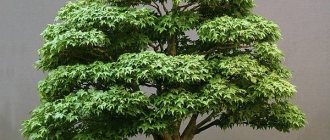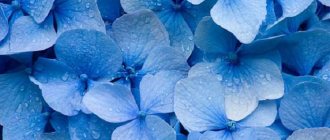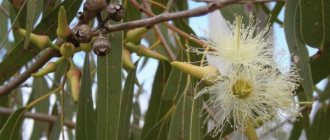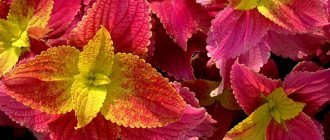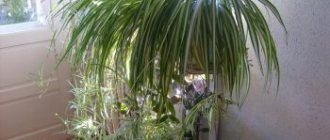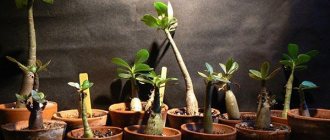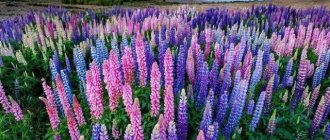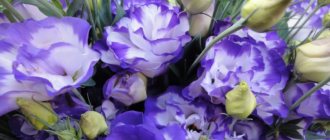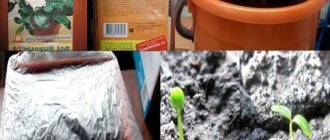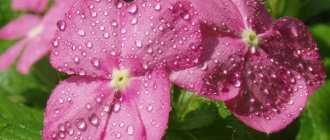Popular types of trees to grow
Literally translated, the art of bonsai means “growing in a tray.” It allows you to get smaller copies of ordinary trees, coniferous and deciduous, by cutting roots, pruning shoots, and using a substrate poor in minerals. To create a unique garden of dwarf crops with a height of 2 to 110 cm, trees with long growth are used.
A bonsai tree will be a unique decoration for any room.
There are several groups of plants that can be grown in miniature:
- The lowest plants are from 9 to 20 cm tall. These are juniper, spruce, serviceberry.
- 20-30 cm high. Barberry, pine, maple are suitable.
- Reaching 30-70 cm. These are Scots pine, birch, hazel.
- Trees up to 60-100 cm. Choose oak, larch, black pine.
- The tallest representatives are more than 100 cm. Acacias, chestnuts, and plane trees are grown in this way.
Note! You can create original green corners at home, where bonsai trees will harmoniously combine with lushly blooming roses or violets.
Some of the best plants for bonsai from seeds include the pepper tree or zanthoxylum, an unpretentious evergreen with dark bark and large, feathery leaves that emit a pleasant aroma. Well suited for creating living works of art.
A tiny variation of the olive tree also looks original; it is recommended that beginners start working with it. The tree has an unusual gray bark, the flowering period occurs in late summer - early autumn.
You can grow bonsai from almost any tree
The most popular varieties of bonsai on Aliexpress
The plant has small leaves; varieties such as red, purple and blue maple have been specially bred for home use. The tree can be either upright or inclined, grow singly or in a small grove.
Ficus
An evergreen tree, it germinates and develops well at room temperature (15 - 20 degrees). This type is often chosen by beginning bonsai growers, as it is considered the best option in terms of relatively unpretentious care.
Japanese pine
A universal plant, ideally takes root in various climatic conditions. After about 10–12 years, the trunk becomes covered with small scales, and small cones appear on the tree.
One of the varieties of the presented species is black pine, which grows mainly in the forests of Korea and China. The peculiarity of this species is that with age, the pine bark darkens and becomes almost black, and the top takes the shape of a pyramid.
Rules for processing and germination
Bonsai seeds can be processed for subsequent germination in several ways. Preparing seeds for germination is called stratification.
Cold way
Bonsai tree - types, cultivation and care at home
The method is chosen when bonsai seeds need to ripen. Relevant for thuja, pine, blue spruce. The step-by-step sequence of actions is as follows:
- Soak the seeds in warm water for 24 hours.
- Transferring the seed to the refrigerator. The time of exposure to cold depends on the variety. For southern tree species it lasts about 60 days, for northern ones – up to six months.
In this way, it is possible to create a temperature difference similar to what occurs in the natural environment.
Instead of refrigeration, it is permissible to place bonsai seed in cold soil, such as perlite or damp sand. After this, the containers are transferred to a cool but well-ventilated room, for example, a balcony.
Note! The use of organic soils can cause contamination of seeds with bacteria and mold, so it is better to avoid them.
Seeds are checked twice a month; rotten and spoiled ones are thrown away; those that hatch should be planted immediately.
Correct stratification is the key to growing a beautiful miniature tree
Warm stratification
The main purpose of the procedure is to awaken the seeds for bonsai. The required mode is humidity 70%, temperature – +20 ℃. This is done in several ways:
- The seeds are placed between layers of damp cloth and placed in a bright place where the sprouts will appear.
- Instead of napkins, it is permissible to use a wet sponge or coconut substrate.
To create a greenhouse effect, the structure is covered with film.
Combined processing method
In this way, pre-planting seeds of cedar and maple, sakura and other crops with a long growth cycle are carried out. This stratification involves alternating exposure to cold and heat. At the first stage, bonsai seeds are placed in cold water or taken to a cool room. And immediately before planting - in warm liquid. This allows the seeds to germinate quickly.
Growing bonsai from seeds is an art, but anyone can master it if they want.
How to grow bonsai?
Growing mini-trees is a whole complex of activities. Appropriate care implies, first of all, correct and sufficient lighting, watering and maintaining temperature conditions. And in order for the tree to look well-groomed, you need to know the features of its pruning. Only then does the potted plant give its owner aesthetic pleasure from contemplation.
Rules of care
It must be remembered that bonsai are not primarily indoor crops. Therefore, they need to be provided with conditions that are as similar as possible to natural ones. Without problems, only crops growing in tropical and subtropical climates can be kept in an apartment. But they will also have to provide high humidity and good lighting.
At the same time, there are no completely external trees. Cold-tolerant plants are able to adapt to the room, but this makes growing more difficult. So, for the winter they must be placed on a cold, unheated balcony.
If in nature a plant is given a period of rest, then this state cannot be disturbed. This is especially true for deciduous crops - for example, linden. Some trees - pine, maple and others can grow both outside and inside the building. There are also representatives of the flora that first grow in the house, and then they are moved to the open air.
As a rule, dwarf trees are placed in the yard for the winter. However, some of them need special protection from the cold. To prevent the roots from freezing, the bowl is placed in an additional container with insulation. They also cover the ground up to the height of the first branch with mulch and agrofibre.
When growing bonsai, watering is extremely important. In nature, trees continuously receive water from the soil. Therefore, the soil in the container should always be sufficiently moist. This is achieved by watering twice daily in small portions.
In winter, when kept indoors in a cold room, watering is done once a day. If such a frequency cannot be ensured, then it is necessary to at least prevent the top layer of soil from drying out. It should be remembered that deciduous species need more moisture than conifers. In addition, you should regularly spray the crown with water.
Each plant has its own pests and diseases. Therefore, preventive treatment with insecticides and antibacterial agents will not hurt.
Regular feeding with three main elements will give the plant strength:
- nitrogen - helps to form green mass;
- phosphorus - needed for the health of the root system;
- potassium - stimulates flowering and fruiting.
In spring, fertilizing is carried out with a preparation mixed in proportions 12:6:6. This stimulates growth. In summer the ratio changes to 10:10:10, in autumn - 3:10:10. For better flowering, use a mixture of 6:6:12. Fertilizers are applied once every 20-30 days. If the plant is grown outside, stop feeding in winter.
Attention! The tree is fertilized for the first time a month after planting in a full-size pot.
Tree formation
Beginners think that it is enough to simply plant a tree and care for it properly. This opinion is wrong. The plant needs to be shaped.
The process consists of several stages:
- After about 2 years, when the seedling becomes woody, the top of the stem and side branches are cut off. Only a small cutting is left. No more than 40% of the crown is cut out at a time. Thanks to this, the trunk becomes thicker, but does not grow in height. The procedure is repeated for several subsequent years. Every year, the roots are trimmed by 30% so that their shape becomes branched.
- When the trunk reaches the desired thickness, several buds are left. From them the crown of the tree is formed. All unnecessary branches are trimmed regularly. After 7-10 years, they begin to form the crown itself. This is done using aluminum wire, which is wound around the branches, forcing them to grow in the desired direction.
- Over the next few years, the shoots thicken. They need to be pinched to improve branching. If the direction of growth needs to be adjusted, the wire is carefully twisted. Florists recommend applying a corset only from October to March. Since at this time the plants are dormant. In addition, during this period, the configuration of branches and crowns is best visible on deciduous crops. When the tree is completely formed, the guides are removed.
Attention! When pruning roots and shoots, there should be no flowers on the plant. All manipulations are carried out with a sharp instrument to ensure even cuts. The blades are first treated with a strong solution of potassium permanganate, chlorhexidine, alcohol, or simply calcined over a fire.
Trees develop more slowly if shallow cuts are made to the trunk from time to time. To heal the wounds, the plant releases sap. This event has another purpose: interesting swells appear on the shoots.
How long will it take to grow?
Growing bonsai is a complex and troublesome process. For example, at least 2 years pass from planting a seed in the ground to the lignification of the shoot. It is possible to finally form branches on some plants only after 7–10 years.
Trees have even been grown for centuries. Thus, in the Imperial Garden of Japan there are centenarians who are 300 years or more old. Therefore, a tree or even a whole garden on the windowsill can be left as a memory of yourself as an inheritance to your grandchildren.
Not everyone can grow bonsai. However, for those who succeed, caring for the plant becomes a lifestyle. This is because they perceive complex and painstaking work as a kind of ritual and meditation. If you look at the problem from this position, then you will definitely succeed in growing a dwarf larch, maple or linden from a small seed.
5/5 — (1 vote)
Soil and container for growing bonsai
When considering how to grow bonsai from seeds at home, it is impossible to ignore the rules for choosing soil. The most preferred option is coarse sand, pre-calcined in the oven. They do it like this:
- The sand is washed in several waters.
- Pour into a thin layer onto a baking sheet.
- Place in the oven for 30 minutes at 180 ℃.
DIY bonsai - growing plants at home
To plant bonsai plants, clay granules that retain moisture well are suitable. Humus is also used for planting; heather soil with high acidity is especially good.
For coniferous species, add a little crushed needles of the selected plant to the soil. The substrate itself is a mixture of equal quantities of leaf soil, sand and humus. Deciduous trees grow best on baked clay mixed with lava and pumice. Fruit crops feel comfortable in a composition of leaf soil and compost, taken in a 1:1 ratio.
Note! To reduce humidity and prevent waterlogging, a drainage layer must be made.
Before planting bonsai seeds, you need to choose a pot. Flat, wide models are suitable for coniferous trees, and oval or round ones are suitable for trees with a curved crown. If the plant has a wide, powerful trunk, then a deep rectangular container is purchased for it. For representatives of flora with an open root system, narrow but deep containers are suitable.
The material for the pot can be anything: ceramics, clay, glass, even wood. But it is better to refuse cheap plastic - it does not have a long lifespan, and bonsai trees react negatively to replanting.
Color and decoration depend on the will of the owner, but you should not purchase a richly decorated vessel - it will distract attention from the living composition. The right choice for bonsai is a light container. Crops are also planted in dark brown, black, even pink pots.
Bonsai tree pot may have an unusual shape
What does a bonsai tree look like?
The word "bonsai" in Japanese means "grown on a tray." This is a miniature copy of a tree that grows in the wild. To form which, they resort to special pruning of the crown and roots. The plant is planted in special containers.
This type of art is related to ikebana and arbosculpture. The latter term implies the formation of various objects from living plants - furniture, buildings, installations.
Peculiarities
A real bonsai plant looks as if it was not formed in greenhouse conditions, but was exposed to frost, wind, rain, snow and other unfavorable factors. And the closer the resemblance to full-sized counterparts growing in the wild, the more skillful the master is considered. At the same time, people seeing such a culture for the first time cannot even believe that it is real and not cast from plastic.
As already mentioned, the main feature of bonsai plants is their low height. Thus, the tallest specimens reach 1.5 m.
Depending on this parameter, the following classification is adopted:
- keshi-tsubu, sieve, gafu - 2.5–20 cm;
- carmona, myabi - 15–25 cm;
- katate-mochi - no higher than 40 cm;
- katate-mochi, 40–120 cm;
- bonju - 1 m and above.
Reference. People who are passionate about growing dwarf trees from European species believe that there is no need to blindly follow tradition when forming the trunk and crown. It is better to take a closer look at the local inhabitants of the forest, and form the crown in their image and likeness.
Views from photos
Although Asian bonsai schools have sets of certain rules, their boundaries are not clearly defined. This allows masters to demonstrate their talents to the maximum. However, the same cannot be said about the Japanese direction, where standards are clearly regulated. This applies to both the size of the trees and the dimensions of the container, table and exposure techniques.
The desire to display nature in miniature has created many styles. Here are the main ones:
- soku are double trunks, parts of which may be different in size;
- tekkan - a formal straight style in which the trunk is thickened near the root and has a straight shape;
- shaka - growing a plant at an angle;
- netsunari - part of the trunk is covered with earth, and the branches grow like separate trees;
- moyogi - informal straight style, the branches or trunk are slightly curved, but the top is always straight. Its axis coincides with the bottom of the trunk and it is perpendicular to the soil;
- kengai (cascade) - repeats the shape of trees growing on mountain slopes. In a full cascade, the top is outside the pot. It descends below ground level, like a vine;
- khan-kengai - semi-cascade style, the top is at ground level;
- literal, or bundzinge - is a straight trunk with a small number of branches;
- sekijoju - a tree grows on a stone entwined with roots (figs are often grown this way). A similar isizuka style, where the trees are located in "gorges";
- hokidati (broom) - relevant for a spreading crown, which is given the shape of a bullet;
- Ikadabuki is a multi-stemmed style in which all shoots have one root. The largest trunk forms the main, highest crown.
Features of sowing seeds and plant care
Planting is carried out in spring or summer, and is also allowed in the first autumn month. The substrate is poured into the selected container so that approximately 2.5 cm remains to the edge. Then the germinated seeds are split into a row onto the prepared soil. They are sprinkled with a thin layer of sand, then pressed down with a wooden circle and carefully irrigated.
Bonsai oak - independent cultivation and care
Next, the container is covered with film or a bag and transferred to a dark place (the temperature should not be higher than +14 ℃).
Note! Every day the film needs to be removed for a few minutes for ventilation. The soil should always be moist, but not swampy.
After the sprouts appear, the film is removed and the pots are moved to a lighted place, under a lamp or on a windowsill. The formation of seedlings - removal of 2/3 of the main root - is carried out in 2-3 months. When the height of the bonsai trunk has reached 10 cm, the trees are planted in separate containers and begin to form a crown.
Proper planting is a guarantee that the tree will grow strong, but tiny
Features of agricultural technology of Japanese and red maple
The collection of bonsai seeds begins in the fall, the duration of stratification is 120 days. Seeds should be planted in April or early May.
Note! To speed up the germination of seeds, they are soaked in hydrogen peroxide for 48 hours. This will protect them from mold and disease.
Maple is good because it can have leaves of different colors, not only the usual green, red or yellow, but also non-standard blue, cyan, and purple tones.
Basic rules for growing maple bonsai:
- Choose a place that is bright, but protected from direct sunlight.
- The plant may die if the thermometer drops below - +5 ℃.
- Watering should be moderate but regular; the soil should not be allowed to dry out. In the summer heat, it is better to irrigate the soil twice a day - in the morning and in the evening.
- New branches are pruned throughout the year, but old shoots can only be formed in autumn or spring.
Note! You cannot feed maple trees in winter.
Features of lemon bonsai agricultural technology
The seeds do not need to be stratified, but must be taken from ripe citrus. To increase the chances of germination, several seeds are planted at the same time. Lemon requires a drainage layer of at least 1.5-2 cm. Seeds are planted to a depth of 1.5 cm. After sowing, the pot is covered with a plastic bag and placed in a room with a temperature of +18 ℃.
After germination, the film is removed and the plant is placed in a bright place. Subsequent care includes watering and fertilizing. Use complexes for indoor plants in half the dosage.
Lemon bonsai is an amazing plant, a real home decoration
Features of cedar agricultural technology
Japanese cedar is an evergreen classic of oriental art. The tiny tree looks very interesting and will be a worthy decoration for a home garden decorated in Chinese style.
Cedar seeds germinate without problems, but react very negatively to excessive amounts of water. To grow cedar, you should follow these steps:
- Soak the seeds in warm water for a day.
- Dry the seeds completely.
- Place them in the sun for 15 minutes.
- Place in a plastic zip bag, seal tightly and refrigerate for a month.
- After the sprouts appear, plant them in the ground.
- Water carefully.
- You should not cover it with film, but it is important to maintain constant humidity of the substrate.
Many people are interested in how long bonsai grows. It all depends on the species and type of wood. For example, a Lebanese cedar will grow only 10 cm in 10 years.
Bonsai cedar looks very elegant and unusual
Features of Japanese pine agricultural technology
Japanese white pine grown using bonsai technology looks very good. Seeds begin to germinate in early spring; if they are fresh, sprouts will appear very quickly. The cold stratification method is used. Pine trees need a bright place, otherwise the needles will be dull and weak.
Note! Excessive soil moisture is the cause of root rot. Watering should be careful.
What seeds can be used for growing?
Often, beginners, trying to form a bonsai, immediately set their sights on exotic plant species - for example, ficus. However, art connoisseurs say that a beautiful dwarf tree can be obtained even from common European garden and forest trees. With proper care, they are no less amazing. In addition, getting their seeds is easier and cheaper. Sometimes it’s enough to take a walk in the park or the forest belt adjacent to the city.
However, not every plant looks beautiful in a smaller copy. For example, chestnut has large leaves and flowers, which looks bad in a smaller version. But the hawthorn, which is inconspicuous in nature, is more suitable for this purpose.
Therefore, when choosing breeds, the following factors must be taken into account:
- possibility of branching from old wood;
- leaf size;
- crown density;
- possibility of growing in small containers;
- aesthetics of the root shape of the trunk.
Pine
Coniferous trees are convenient because their trunks can be shaped without fear of damage. Unpretentious pine is an ideal “try-out” option for beginners.
The following breeds are considered favorites of gardeners:
- Japanese black is a traditional variety for the Land of the Rising Sun, where it is used most often. This pine grows slowly, is unpretentious and has an expressive bark pattern;
- Japanese white - looks unusual due to whitish needles, has a thick, spreading crown;
- mountain is another easy-to-grow variety. Tolerates temperature changes well without changing the color of the needles. It is also notable for the fact that it produces soft purple flowers;
- ordinary - the most affordable and easiest option for bonsai.
Maple
The plant has spread quite widely. This means that there is a place for him in the bowl. Maple makes amazingly beautiful compositions.
The following types are most suitable for this:
- field;
- ash leaf;
- platanofolia;
- rocky
The dwarf copies of the Palm-shaped maple are very beautiful. The variety pleases the eye with its elegant, carved leaves of bright colors.
Linden
A tree with fragrant flowers can also be planted in a flowerpot. American linden is grown as a pot crop. It has an attractive spherical crown shape, although pruning it is quite difficult. Gardeners also fell in love with the heart-shaped linden tree. This is the smallest variety used for bonsai. No less interesting is the broadleaf linden. Flowers with a fragrant, expressive aroma bloom on it during the season.
Rose
The Chinese rose looks great in such compositions. It is an evergreen shrub from the mallow family. Every year large flowers - red, yellow, orange - are formed on a small trunk. They live no more than two days. Despite its fantastic flowering, the Chinese rose is not often grown due to its large leaves.
Larch
European larch in nature rises 40 m above the ground. But it can also be grown as an exhibit of a miniature collection. The plant attracts art lovers with its beautiful, loose crown, which spreads widely thanks to horizontally growing branches. Leaf blades replace needles, which turn yellow and fall off in the fall. In a pot, the plant reaches a size of 1.5–2 m.
Rowan tree
You can also try to create a bonsai from this garden crop. For this purpose, low-growing varieties are taken. However, we must take into account that rowan has a rather large leaf. Therefore, many gardeners are in no hurry to waste energy on it. The miniature is no longer so small. But if you still want to experiment, then propagation from seeds is one of the most successful methods. Because it is difficult for cuttings to root.
Juniper
To obtain bonsai, choose varieties with a compact crown. The branches and trunk must be flexible. It’s good if the juniper produces a lot of foliage - this has a positive effect on the decorative effect. The Kazatsky variety transforms better than others. It's good even for beginners.
You can also pay attention to the following varieties of shrubs:
- scaly;
- ordinary;
- rocky;
- Virginia.
Watering, fertilizing, wintering
The tiny trees are grown in small pots, so watering must be done very carefully. Two methods are used:
- Irrigation. Moistening the soil using a small watering can with a thin spout.
- Immersion. It is important that there are drainage holes in the bottom of the pot. The container with the plant is immersed in a basin filled with water for 5-10 minutes.
Note! Rainwater or tap water that has stood for at least 48 hours is suitable for irrigation.
For feeding, mineral complexes enriched with nitrogen, potassium, and phosphorus are used. You can also take fertilizers for indoor plants, but at a concentration of 50%, this will prevent excessive growth of shoots and foliage. Feeding rules:
- For the summer period, the potassium content is reduced.
- In spring and autumn, compositions rich in nitrogen and phosphorus are chosen.
Preparation for winter involves cleansing the plant of damaged and dried shoots and destroying pests. The pots are moved to a bright place, protected from drafts and blowing.
A bonsai garden is a dream that can come true. A variety of coniferous, deciduous and even fruit trees in miniature can be grown from seeds, the main thing is to follow the recommendations.
Propagation by cuttings
How to choose?
Bonsai can be grown using cuttings. A plant planted in this way will grow faster than a tree from a seed. It is better to collect cuttings in the spring season. Green shoots five to ten centimeters long are suitable for planting.
Instructions
To grow a bonsai tree using cuttings, you need to prepare a suitable container in which the cuttings will be planted. The pot should be wide and low.
- The first layer should be a drainage layer, such as fine gravel, poured into the container.
- Then you should evenly pour a layer of soil, but not to the very top of the pot.
- The prepared cuttings must be stuck into the soil to a depth of several centimeters.
- After planting, the cuttings should be watered thoroughly.
Bonsai can be successfully grown at home from seeds or cuttings. For successful cultivation, it is necessary to comply with a number of conditions, adhere to the desired temperature regime and other essential conditions.
Reviews about bonsai from Aliexpress
Bonsai pictures on aliexpress attract buyers with their extraordinary beauty. In addition to ordinary trees with green leaves or needles, the stores offer blue, pink, red or even multi-colored wonders!
But, of course, most customers are afraid to buy plant seeds online, because the likelihood that they will sprout anything at all cannot be predicted.
This is a kind of game of luck and luck. Therefore, many carefully study product reviews before deciding to purchase.
Flowering and fruiting
Despite the fact that the bonsai tree itself looks very beautiful and unusual, some gardeners make every effort to ensure that the plant becomes covered with flowers or even begins to bear fruit (Figure 7).
In order for flowering to occur, you must follow these rules:
- The crop must receive a sufficient amount of light corresponding to that characteristic of its natural growing environment.
- The soil should not be dry, so the watering schedule must be followed very strictly.
- Flowering may not occur if there are too many nutrients in the soil, in particular nitrogen. It is this microelement that is responsible for the growth of green mass. As a result, the plant spends all its energy on the formation of foliage, and not on the formation of buds.
Figure 7. Flowering and fruiting of bonsai is possible only if all care recommendations are followed.
Some miniature plants (pomegranates, cherry or apple trees) can even bear fruit. But for this it is important to provide the plant with a full period of hibernation, and during the active growing season - strictly adhere to the watering regime, maintain an optimal temperature and not expose the plant to direct sunlight, which can lead to the ovary falling off.
If you are also interested in the possibility of growing bonsai at home, we recommend that you watch the video, which provides practical tips on caring for miniature trees.
How to grow sakura bonsai from seeds at home?
Gardeners usually buy seeds because they are much cheaper than germinated plants. At the same time, finding seedlings is much more difficult. It is worth taking a closer look at exactly how to grow a sakura bonsai.
Growing Seeds
To grow a sakura tree from seeds, you need to follow a certain algorithm, which is as follows:
- First, you need to chop the seeds using sandpaper (this is done carefully so as not to damage the internal component of the “nut”).
- Then you should place the seeds in warm water.
- Within 2-3 weeks, you need to add water in a timely manner.
- When roots appear, you need to plant the plant.
The preparatory stage determines whether a tree will turn out from seeds. Thus, you need to be careful at this stage. The process of pricking the seeds is quite labor-intensive, since they are small. In this case, you need to make sure that the top layer is removed while the bottom layer remains intact.
How to plant correctly?
There are several rules for planting cherry bonsai. Everything must be done in a certain sequence. In this case, prepare a small pot in advance. If you choose it “for growth”, the plant will grow for a very long time. First, he will need to grow a root system, which will take up almost the entire space. Only then will the above-ground part begin to appear. To reduce the time for shoots to appear, choose a small pot.
Here's how the landing happens:
- the seeds need to be cracked a little so that they can germinate (you can also use sandpaper for this);
- place them in warm water and wait for germination;
- moisten the soil before sowing;
- place the seeds in the soil to a depth of 0.5–1 cm.
Fertilizer and feeding of cedar bonsai.
When growing cedar bonsai with your own hands, it is necessary, at a certain stage, to slow down its growth. A cramped pot will help control the process of its growth, but then a sufficient amount of nutrients will not come from the soil. This can be corrected by feeding the plant.
You need to feed the plant taking into account the age, time of year and type of tree. The main feeding is considered to be fertilizing the plant with phosphorus, nitrogen or potassium. Sometimes bromine, copper, calcium, magnesium or zinc are added to fertilizers in small quantities. Periodically, you need to feed the tree with microelements.
As soon as the plant begins to actively grow, fertilizing should begin. Feeding occurs monthly from early spring to July. Then there is a break until September. And from October, feeding continues until dormancy sets in.
Description of the plant
Sakura bonsai is an ornamental tree that does not require special care conditions. The plant is resistant to the dryness of city apartments, indoor gas pollution, watering and lighting.
Japanese cherry has become a favorite among gardeners due to its amazing flowering. Inflorescences with a diameter of 1 cm tightly frame the branches, creating a monochromatic cloud.
In nature, sakura blooms with bright pink flowers. Breeders have tried and artificially bred plants with a variety of shades.
Types of cedar
To grow a bonsai-style tree, you can use any of the following types: Lebanese, Himalayan, Atlas and Cypriot types of cedar.
Atlas cedar grows in Morocco and Algeria. The height of the tree reaches 50m, and the diameter of the trunk is 2m. The needles are bluish-green, the needles are up to 2.5 cm long. The cones are cylindrical, up to 10 cm long. The cones and needles are shorter than those of the Lebanese cedar. Frost-resistant - down to -20C, and resistant to drought.
Cyprus or short-coniferous cedar is found only in Cyprus. This tree is up to 12m tall with a trunk diameter of up to 2m and an umbrella-shaped crown. The needles are bluish-green, very short, 5-8 mm long. The cones are cylindrical-oval, 6-7 cm long.
Lebanese cedar grows up to 50m tall. The crown is conical at a young age and becomes umbrella-shaped with age. The needles are from green to grayish-blue-green, tetrahedral, forming bunches of 30-40 pieces, the length of the needles is up to 3.5 cm. The cones are cylindrical, light brown, up to 12 cm long and 4-6 cm wide.
Cedar of Lebanon grows slowly. Tolerates a short-term drop in temperature to −30 °C, but dies during a long period of negative temperatures. Light-loving, drought-resistant, undemanding to soil, but suffers greatly from excess moisture.
Himalayan cedar is native to eastern Asia. The tree grows up to 50m or more, with a trunk diameter of up to 3m. The crown is broadly cone-shaped, with horizontally growing branches. The needles are soft, thin, light gray-green with a bluish tint, collected in bunches of 30-40 needles. The needles are three- or tetrahedral, up to 5 centimeters long. The cones are cylindrical, sit on top of the branches and face upwards.
Himalayan cedar tolerates shade better than other types of cedar. Lives up to 1000 years.
Types of coniferous plants similar to cedar
Siberian cedar is actually Siberian cedar pine (Pinus sibirica), European cedar is actually European cedar pine (Pinus cembra). Korean cedar - Korean cedar pine (Pinus koraiensis).
In addition to some types of pine, thujas and junipers are also confused with cedars. For example, Canadian red cedar is Thuja plicata and Canadian white cedar is Thuja occidentalis. For example, Eastern red cedar is called Virginia juniper (Juniperus virginiana). And Alaskan yellow cedar is called Nootka cypress (Cupressus nootkatensis).
Features of different types of cedar
All types of cedar grow in the southern territories of Russia, where the absolute minimum temperature does not reach −25°C, and self-sow. Plants require soil that is loose on the surface and well permeable to water. Moreover, all cedars are very sensitive to stagnation of water in the soil, especially Himalayan cedar .
All types of cedars grow well in lime-poor soils. On dry calcareous soils, cedars (Atlas, Lebanese and especially Himalayan) suffer greatly from chlorosis and often die. Atlas and Lebanese cedars grow well on less dry calcareous soils or on less illuminated mountain slopes. With fresher soils and higher air humidity, cedars can grow successfully.
Himalayan cedar is best suited for bonsai formation. The process is labor intensive and will take several years, so be patient.
Review of bonsai from Aliexpress
There are a huge number of varieties of dwarf bonsai trees. After all, all such perennial plants are an exact reduced copy of real tree “giants”, of which there are more than 60,000 species in the world. At the same time, the height of a proper mini-tree cannot exceed 120 cm. The ideal plant for the home is a tree with a height of 5-30 cm. It is also recommended to start the first steps in the art of bonsai with dwarf plants that have few needles or foliage. This is bamboo, cypress or buckthorn. Today on Aliexpress you can purchase the following mini-tree seeds:
- sakura
- lilac
- wisteria
- red and blue maple
- olive Tree
- maple and much more
In addition, on the Chinese trading platform you can also purchase seeds of fruit trees, in particular, tangerine, banana and lemon.
Japanese maple seeds
Although the seeds of Japanese maple bonsai look like many other seeds, they do not produce the most ordinary “sprouts”. Today, the most popular are colored copies of maple in the “mini” format (red, blue and purple), having a height of 30-35 cm. At the same time, the traditional, more familiar dwarf maple with green leaves is in less demand. The home garden looks quite unusual, in which several varieties of Japanese maple are presented.
Sakura. Japanese cherry seeds
Advice! A correctly selected bowl has the following dimensions: H of the pot = D of the base of the dwarf tree trunk, L = 2/3 L of the tree, B = B of the longest branches.
Tangerine Tree Seeds
The tangerine bonsai tree is an interesting, but rather capricious plant. Its main feature is its great “love” for moisture. That is, the larger the leaves of a miniature tree, the more often it needs to be sprayed. On the other hand, excess moisture can lead to fungal diseases, so overwatering is also unacceptable. Accordingly, in order to grow a beautiful, healthy dwarf tangerine tree, you need to put in a lot of effort and analyze many related factors.
Japanese cedar seeds
Cedar bonsai seeds can give lovers of evergreens a lot of positive emotions, however, only if they are grown correctly. And the very first thing you need to do with seeds from Aliexpress (even before planting) is to give them a small artificial “freeze”. This process is called “stratification” and involves keeping the seeds in a cold place for approximately 20 to 90 days. Also, do not forget that Japanese cedar loves bright, sunlight. And if the needles begin to acquire a brown tint, it means that the miniature plant lacks it. But coloring cedar needles in a bronze shade is considered the norm, but only if this happens in winter.
Mini bonsai banana tree
Important! Banana is a tropical tree. Therefore, before you decide to grow a smaller copy of it at home, you should think about how to provide the plant with the appropriate conditions for growth.
Wisteria seeds
Wisteria or deciduous vine looks equally charming both in real size and in mini format. It is for this reason that the seeds of wisteria bonsai make excellent compositions that can decorate any home mini-garden. However, in order for the plant to grow to the desired size, it must be propagated vegetatively. After all, vine seeds are most often not enough for independent growth.
Bonsai from China: what grew:
If we analyze all the estimates, the majority of buyers remain disappointed with their purchase. Others post photos of bonsai seeds and what grew from them. Most likely, in the latter case, the correct seed planting technique was simply used.
3 Replies to “Choosing bonsai seeds from Aliexpress from China”
I ordered seeds from Aliexpress. At first I ordered from one store, but they came, sowed it as you said, it’s been a week now and we’ve been waiting. True, not all of them sprouted, but that was my mistake. Noticed the appearance of rot.
Before that, I also took bonsai seeds from China, but did not read reviews about the stores. They came, but nothing came up.
You can also add links to stores you have selected from Aliexpress with good seeds and reviews.
I agree with the comment above. It would be great to add links to bonsai from aliexpress with good reviews. Because They have hundreds of stores, and it’s difficult to choose a good one.
Of course, many of us would not refuse to grow such an interesting and attractive-looking miniature tree, but not everything is so simple. Bonsai does not take root with everyone, since it is necessary to create initially favorable conditions. The article describes the planting itself well, both for beginners in this matter and for professionals.
Bonsai from Aliexpress are miniature copies of trees, with the help of which interesting, attractive mini-gardens are created even at home.
Residents of the concrete “jungle” often suffer from a lack of green space in the city. This is what pushes a large number of people to grow a mini-garden on their own balcony or windowsill. Bonsai from Aliexpress is a good opportunity to “green” a city apartment without spending a lot of money. Is it worth buying dwarf tree seeds from a Chinese marketplace? And is it really possible to grow miniature copies of perennial plants at home?
